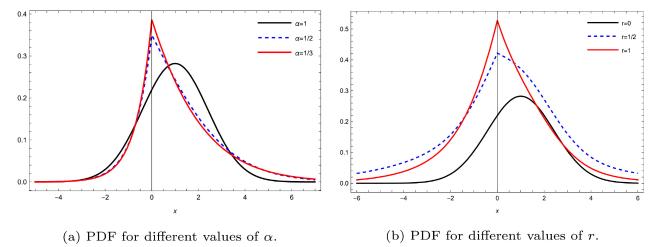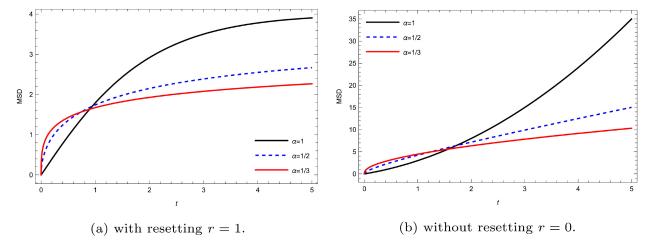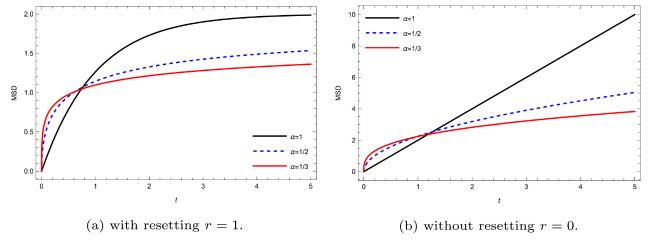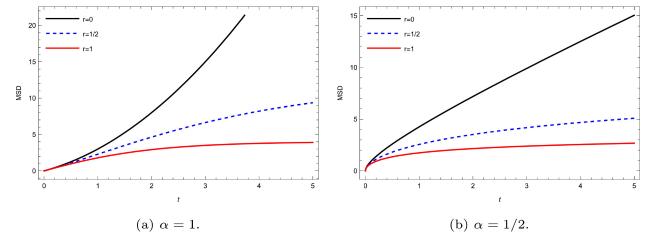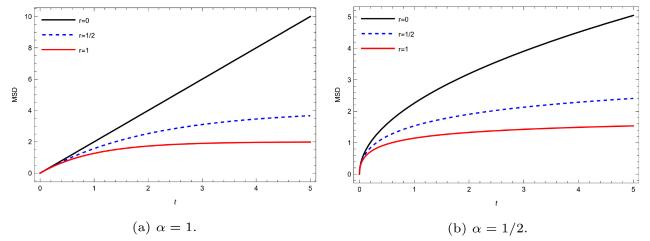Moreover, From Eq. (33), one can find the typical behavior of the MSD for different values of fractional order
and resetting rate
. Fig. 3, Fig. 4, Fig. 5, Fig. 6 exhibits sub-diffusion due to the power-law dependence of MSD on time. This is in contrast to a normal diffusion process where a particle's MSD follows a linear with time. Furthermore, the obtained results illustrated in Fig. 3, Fig. 4, Fig. 5, Fig. 6 for the fractional advection-diffusion equation in both resetting and non-resetting assumptions are in agreement with
[14],
[15],
[30]. In addition to that, from the left panel of Fig. 3, Fig. 4, one can show that, the resetting rate can changes the character of long time solution. And from Fig. 3, Fig. 4, Fig. 5, Fig. 6, we can show increasing the value of resetting rate leads to the steady state behavior.



